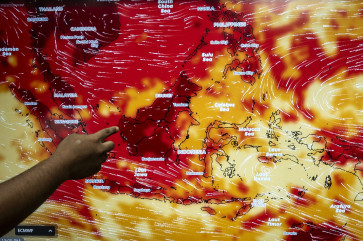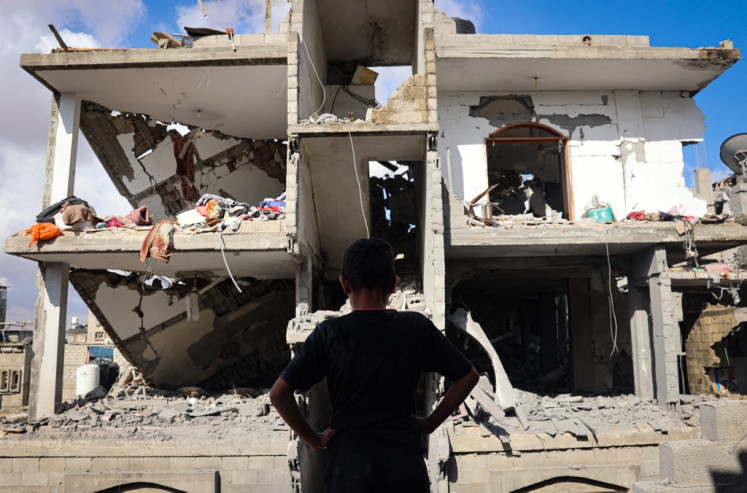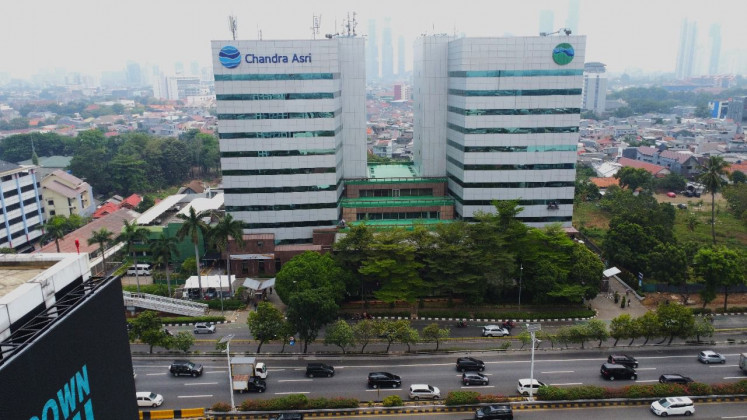Tech lessons for RI from recovering Nepal
Nepal like Indonesia is no stranger to earthquakes and other natural disasters
Change Size

N
epal like Indonesia is no stranger to earthquakes and other natural disasters. Two years ago, a 7.8 magnitude earthquake on April 25 and a major aftershock on May 12 took nearly 9,000 lives and damaged hundreds of thousands of homes here in Nepal.
While rich in culture and heritage, Nepal even before the earthquake was one of Asia’s poorest nations. More than 40 percent of Nepal’s 29 million population lives on less than US$2 a day, and 70 percent are employed in the agricultural sector, according to the World Bank.
Now two years after the 2015 earthquake, the results of reconstruction efforts have been decidedly mixed, with tens of thousands of homes, buildings and heritage sites still needing to be rebuilt. This, despite pledges of more than $4 billion in aid to help this nation landlocked between China and India.
Still, amidst any pessimism over persistent corruption and cynicism in a still-recovering Nepal, there is reason for hope. My latest visit to this nation underscores that even in the poorest of countries, hope can be found in the transformative power of technology.
It is not just in the developed nations that technology can spark significant, positive change. Three lessons from Nepal bear this out and also have relevance to Indonesia.
First, technology can help transform traditional relief efforts.
This is particularly true after natural disasters, says Basanta Shresthra, director of strategic cooperation at the Integrated Center for Integrated Mountain Development (ICIMOD), a regional intergovernmental organization based in Kathmandu that is focused in part on the sustainable development of the Hindu Kush Himalaya region.
Encompassing Nepal, this mountainous region extends more than 3,380 kilometers over all or part of eight countries from Afghanistan in the west to Myanmar in the east.
In the immediate aftermath of the 2015 earthquake, technologies such as remote sensing with the latest satellite imageries, crowdsourcing, unmanned air vehicles and mobile applications were used for quick damage assessments to help with disaster response and recovery, notes Shresthra.
___________________________
[...] even in the poorest of countries, hope can be found in the transformative power of technology.
Technology has also helped increase collaboration across disciplines and geographic boundaries.
Secondly, technology can empower.
A conversation with America’s top diplomat in Nepal, United States Ambassador Alaina Teplitz, only reinforced my view that technology is more friend than foe — enabling new solutions to age-old problems.
Information Communications Technology (ICT), driven in part via the humble mobile phone, as an example, can help transform agriculture — a core of the Nepali economy. Better access to weather data, information on improved crop selection and market prices can prove transformative.
“Disruptive technologies offer new opportunities to devise innovative solutions and take meaningful actions to address key societal challenges such as climate change, disaster risk reduction, and air pollution, among others,” adds Shrestra.
“We live in a truly interconnected world, with an ongoing digital transformation providing unimaginable opportunities for youth to help the development of Nepal,” Shrestra says. “Youth forces are unleashing the power of technology to address issues such as governance and transparency.”
And third, and perhaps most critically, technology is creating jobs. This is true even as fears rise in more developed nations over the negative impact of technology on employment.
That’s a clear message from my meetings with Tim Gocher, the CEO of the Dolma Impact Fund, and others focused on growing Nepal’s private sector. The Dolma Impact Fund — on whose advisory board I sit — is the first international private equity fund for Nepal and has been investing for almost three years in the nation.
“In Nepal, we are seeing how technology can also transform businesses and lives,” Gocher tells me. “We see examples in healthcare with remote medicine, in education where teaching materials can now be distributed online to remote schools, and in banking where mobile and online banking are changing the landscape for rural financial services.”
One example comes from the fund’s investment in CloudFactory Group, a company whose mission is to connect one million people in the developing world to digital-age work, while raising them up as leaders to address poverty in their own communities.
The company is using a cloud-based platform to distribute simple tasks to its cloud workers, mainly in Nepal, from tech companies around the world. Such tasks range from transcribing expense receipts to annotating images for firms developing AI algorithms for self-driving cars.
“Our investment in CloudFactory Group takes technology’s social and economic benefit to a new level,” says Gocher. “They have changed what would be minimum wage work in a developed nation into much-needed work for Nepalis paying well over the minimum wage, and already have over 1,000 cloud workers. Our investment aims to enable them to create meaningful work for thousands more.”
I hear from others of several additional examples of the private sector harnessing the power of technology to create jobs in this nation perhaps more known for Everest than for innovative businesses.
At Incessant Rain Animation Studios in Kathmandu, teams are specializing in 3D character animation and producing visual effects for games, feature films and television. In biotech, Intrepid Medtech, with bases in Canada and Nepal, works in close conjunction with the Center for Molecular Dynamics Nepal on clinical diagnostics tools and technologies. And Massachusetts-based Deerwalk, a healthcare analytics company, has established a large development center in Nepal.
As is often the case, private citizens and the private sector are the ones who are — by necessity — innovating and filling the gap, when promised development assistance is slow in coming. An environment that enables businesses to develop — not more aid money — will be the key to a stronger economy and sustained job creation. This is also true in Indonesia.
To match the resilience of its people, the government must follow up on its own pledges to loosen its grip on the economy.
Technology has a critical role to play in helping Nepal to overcome past tragedy and to leapfrog from its state of development.
That and other lessons must be taken to heart before the next inevitable natural disaster hits Nepal, for resilience and growth will be found first and foremost in a thriving private sector.
_______________________________
The writer, a former US ambassador to the Asian Development Bank, is managing director of advisory firm RiverPeak Group, LLC and the inaugural Milken Institute Asia fellow.









